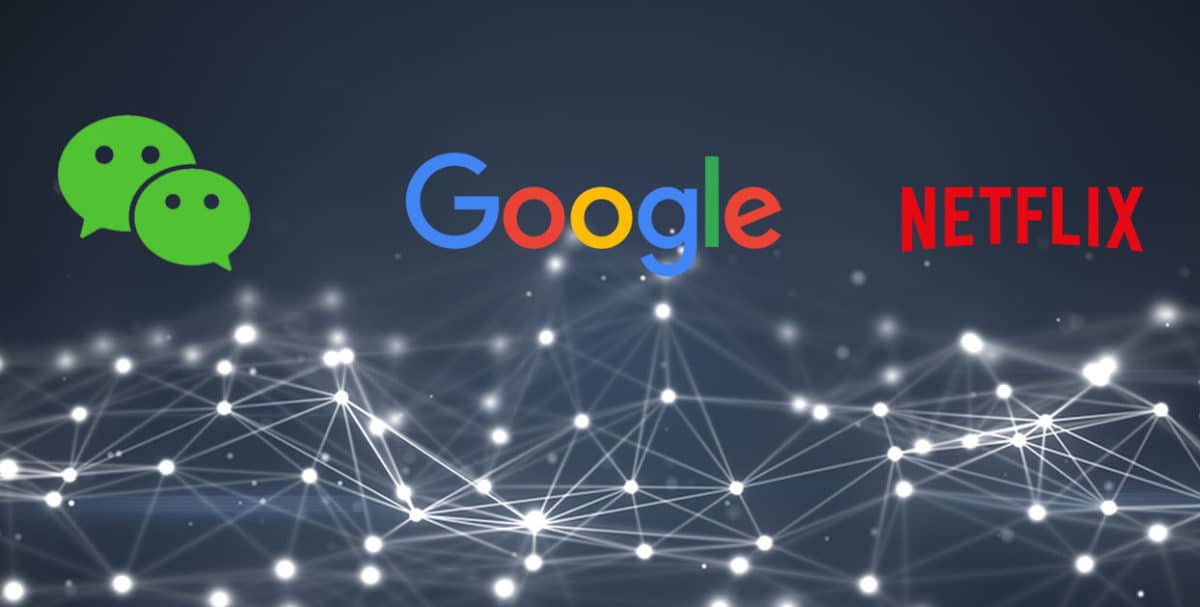WeChat, created by Allen Zhang, became an integral part of the life of anyone living in China, with more than 1 billion users as of 2019.
Yet, how did Allen Zhang’s 2,000-people WeChat team manage to revolutionize the way Chinese users communicate, share, pay, and more?
A flat yet top-down structure
The organization structure of WeChat is very flat. Allen Zhang has 20 senior managers reports to him, and each manager is in charge of a team of 50 to 150 people.
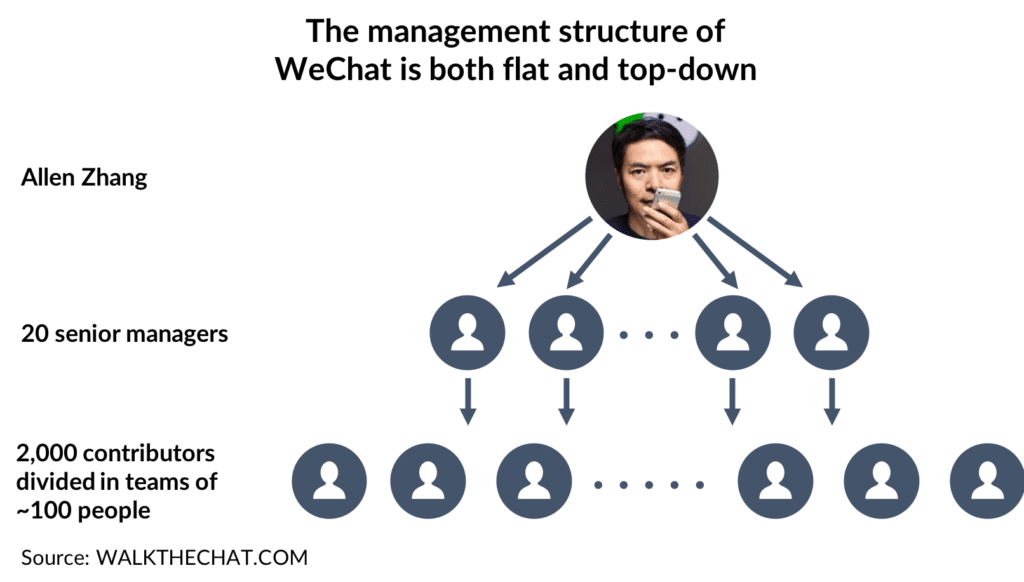
Each team is given enough authority and ownership of the part of products that they are in charge of. But for any release of a new feature, no matter the size, it has to pass Allen Zhang. In WeChat team, this process is referred to as Pass Allen (过小龙). If Allen disapproves it, the work might have been done in vain.
Allen’s executive decision power and the level of involvement in the details is often compared to Steve Jobs. Both are legendary tech icons that create revolutionary products through meticulous control. Allen sees Steve Jobs as an icon, so much so that when he released the Mini Program game for the first time, he uses Steve’s Jobs’ favorite music made by Bob Dylan’ as the background music.
Allen sees WeChat as an art project, and he is very selective in adding any feature. As French author St Exupery said: “Perfection is achieved, not when there is nothing more to add, but when there is nothing left to take away.”
The pros and cons of centralized decisions
The top-down management style of Allen Zhang is the key to maintaining WeChat’s product consistency. If each team was able to add a little feature to WeChat, it would soon become too complicated. A good product manager like Allen can efficiently decline most of the user requests and only launch the ones that are truly necessary.
Of course, a super App like WeChat might become a product that’s way too big for any one person to manage. Another drawback of the one-man decision-making process is that WeChat has to put a great amount of risk on one excellent product manager. It is hard to predict what would be the consequences if this person left the company.
In the case of Apple, the degrees of radical innovation dropped after the death of Steve Jobs (although Tim Cook continued to push incremental innovation)
Allen is slowly giving some teams the freedom to push updates without his approval. For example, the Top Story team received this authority. And it’s clear the Top Story feature is making more frequent updates compared to other features.
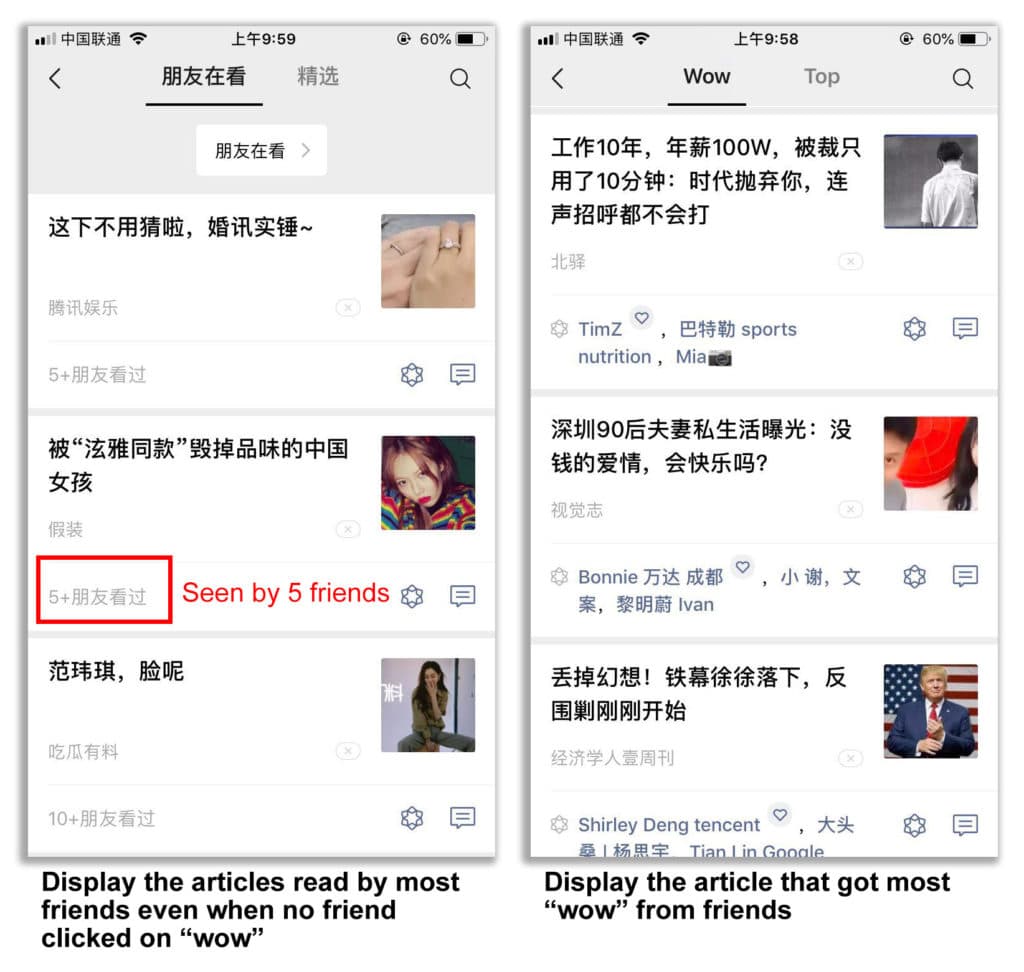
Netflix & Google: examples of decentralized decision making
Other top tech companies adapt a rather different decision-making structure. Two prime examples are Netflix and Google.
Netflix: decentralized survival of the fittest
Netflix encourage each employee to make their own decision. Manager’s major role is to bring a clear context so that others have the right information to make great decisions.
“We strive to develop good decision-making muscle everywhere in our company. We pride ourselves on how few, not how many, decisions senior management makes.”
Netflix Culture introduction – https://jobs.netflix.com/culture
Although the significant decision of Netflix has to be made by a “informed captain” to avoid “diffuse responsibility and accountability”. The overall idea is to empower every employee in order to maximize efficiency.
However, Netflix culture is far from being a “feel good” family culture where every opinion is equally valued. It is in fact quite the opposite: often described as a ruthless culture where employees are held to extremely high standards, or otherwise are shown the door.
Netflix puts it in mild terms in its culture deck:
“Being on a dream team is not right for everyone, and that is OK. Many people value job security very highly, and would prefer to work at companies whose orientation is more about stability, seniority, and working around inconsistent employee effectiveness. Our model works best for people who highly value consistent excellence in their colleagues.“
Netflix Culture introduction – https://jobs.netflix.com/culture
Google: bye bye managers
Google is another company famous for its tendency to push organic innovation.
In particular, Google strips a lot of authority from managers in order to give more autonomy to individuals. Here is a quote from Google’s former head of HR Lazlo Bock:
“Here is a sample of the decisions managers at Google cannot make unilaterally:
Lazlo Bock, “WORK RULES”
– Whom to hire
– Whom to fire
– How someone’s performance is rated
– How much of a salary increase, bonus, or stock grant to give someone
– Who is selected to win an award for great management
– Whom to promote
– When code is of sufficient quality to be incorporated into our software code base
– The final design of a product and when to launch it“
Instead, these decisions are often made by committees, groups of peers or other independent teams. A very different approach from WeChat’s approach of relying on a single decision maker (note that of course, we are to some extent comparing apples and oranges here because Google is a company while WeChat is a product. But the comparison is nonetheless interesting)
Google was also made famous by its policy of leaving employees to spend 20% of time working on side-projects that are not directly related to their job description. This participates into their culture of allowing people to come up with their own ideas and not being micromanaged.
So, which approach works best?
First of all, it is worth saying that not all decentralized decision-making approaches yield the same results. Simply comparing Google and Netflix (two very successful companies with decentralized models) shows striking differences.
The comparison of the Glassdoor reviews of Netflix and Google shows a much higher employee satisfaction for Google employees.
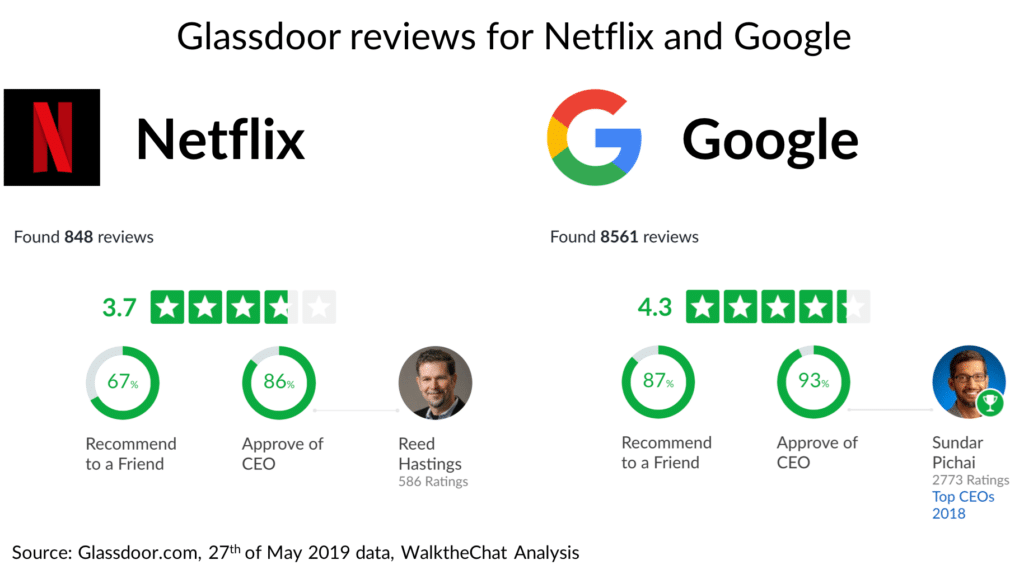
This is true even though Netflix actually pays higher salaries than Google ($224,096/year for a Senior Software Engineer, against $172,254/year for Google)
Part of the reason might be the fact that, unlike in Google, managers do have “fire or promote” power over their team. As stated in an Anonymous Glassdoor review:
“Netflix has very strange politics, because people’s jobs are at the whim of their manager. In other words, if a manager decides that a particular report is no longer a “star,” he or she will get a package. So, given that employees are not stupid, there is a lot of kissing up, resulting in a lot of comedy.”
Review by Senior Software Engineer still employed at Netflix – Glassdoor.com
This problem is likely to be faced by WeChat given its very top-down structure. A few managers part of the “early WeChat team” are still working closely with Allen Zhang and therefore hold a large amount of power, risking the rise of a highly political environment.
Another problem common to both companies is the fact that Netflix has a flat organization, therefore leaving little room for promotions. This issue is reflected in another company review.
“There is no growth position wise for individual contributors. This is a consequence of having a flat structure.“
Review by former Netflix employee – Glassdoor.com
WeChat is also likely to experience similar challenges as its flat structure makes it very challenging for one of the 2,000 contributors to move to the next level of management.
Different management methods for different business models
So who’s right? Google and Netflix with their decentralized model, or WeChat and Apple with their top-down models? It could be that they all got it right… within the context of their specific business model.
- In structures with a small set of products, a top-down decision-making process is preferable: in the structure such as Apple (which focuses on a small number of products) or WeChat (which is literally one product), there is a strong case to concentrate decision-making in order to improve product consistency
- In structures with many products, decentralized decision-making can yield superior results: structures such as Google (with a large number of products and initiatives such as Google Search, Chrome OS, Chrome Browser, Gmail, GoogleX, etc.) or Netflix (which requires the ongoing production of numerous creative shows in order to drive traffic), a decentralized approach might be preferable in order to foster innovation
As such, the current organization might be a perfect fit for WeChat.
Actually, the top-down approach of management within the WeChat team seems to reflect the structure of the App: it is also a top-down ecosystem which is orchestrating everything happening on your phone, from chat to social and payments.
The agile approach
Although final decision-making relies on Allen’s shoulders, WeChat management approach still relies on the joint work of many small autonomous teams.
And the top-down approval of core features doesn’t prevent freedom at the team level.
In WeChat, each team has its own R&D members, developers, product manager and testing group. Each team can independently complete a project without asking for help from another team.
This is very different from the traditional function-oriented team structure. The waterfall style structure means building a new feature would rely on an entire company’s jointed effort.
The agile approach unavoidably creates duplicate resources. But it maximizes the ownership and speed of building a new feature. Each team can build a new feature, and teams are allowed to try new approaches and make mistakes.
Since WeChat operates in a rapidly changing social media space, dividing a team into smaller groups helps to keep the pace of innovation.
Netflix applies a similar logic by dividing its product in an estimated 700 “modules” (called microservices). Each microservice is handled by a specific team which can communicate with the other modules via an API (Application Programming Interface – an interface between two pieces of software).
The image below is a map of the various micro-services managed by Netflix. It is a perfect illustration of its heavily decentralized architecture.
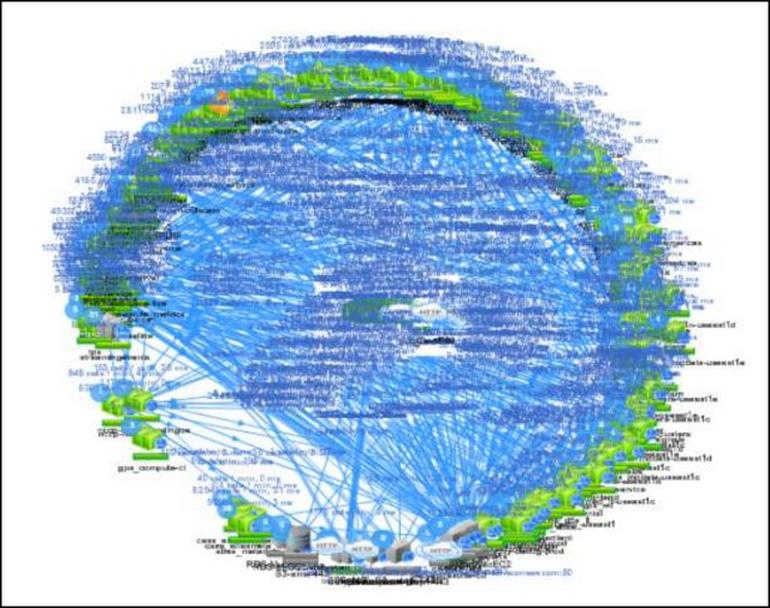
Like in the case of WeChat, the microservice approach enables a lot of local innovation: each team can make any internal modification to their code without risking to break any dependency with other teams, as long as they keep their API consistent.
In fact, WeChat applies a very similar approach to the “Highly aligned, loosely coupled” approach of Netflix. While the entire product team has to remain highly aligned (to Allen Zhang’s vision for the product) it also remains highly independent and autonomous.
The following quote from Netflix’s Culture introduction could apply almost literally to WeChat:
“The success of a “Highly Aligned, Loosely Coupled” work environment is dependent upon the collaborative efforts of high performance individuals and effective context. Ultimately, the end goal is to grow the business for bigger impact while increasing flexibility and agility. We seek to be big, fast and nimble.”
Netflix Culture introduction – https://jobs.netflix.com/culture
Tolerance toward error and redundancy
A top-down flat structure with a lot of autonomous teams will inevitably generate a lot of mistakes and redundancy. Tencent’s culture is however very honest about accepting these drawbacks.
Pony Ma, CEO of Tencent, spoke in 2012 about his “seven principles” for product development, one of the principle is “resilience through trial and error and tolerance of some redundancy”.
WeChat is a product that stood in a “Horse race” between two internal teams (WeChat vs. QQ) developing a similar product. In a “winner takes all” market that requires rapid innovation, such horse race approach forces intense competition within a large organization. It doesn’t matter to spend twice the resources on the short term if it doubles the chances to win against an external competitor.
Today’s WeChat team still has a high tolerance for error. Teams would often test a new feature within a smaller test group before releasing it to the general public.
Once again, we can see some parallels with Netflix culture:
“Freedom and rapid recovery is better than trying to prevent error… Our big threat over time is lack of innovation, so we should be relatively error tolerant. Rapid recovery is possible if people have great judgment.”
Netflix Culture introduction – https://jobs.netflix.com/culture
When the future is uncertain and competition is strong, embracing chaos and tolerating errors is the best way to move forward.
Conclusion
WeChat can appear as a rigid, top-down organization managed by an all-powerful product manager.
By taking a closer look, we can however observe a lot of innovation happening at the level of an autonomous team which is allowed to duplicate existing work and make mistakes. This approach mirrors the organization of more decentralized companies such as Google or Netflix.
There are however limitations to the current process. With more than 1 billion users, the WeChat App is more and more becoming a complete ecosystem. It remains unclear to which extent Allen Zhang will manage to maintain the development of this gigantic ecosystem with new and innovative features at a sufficiently rapid pace.

